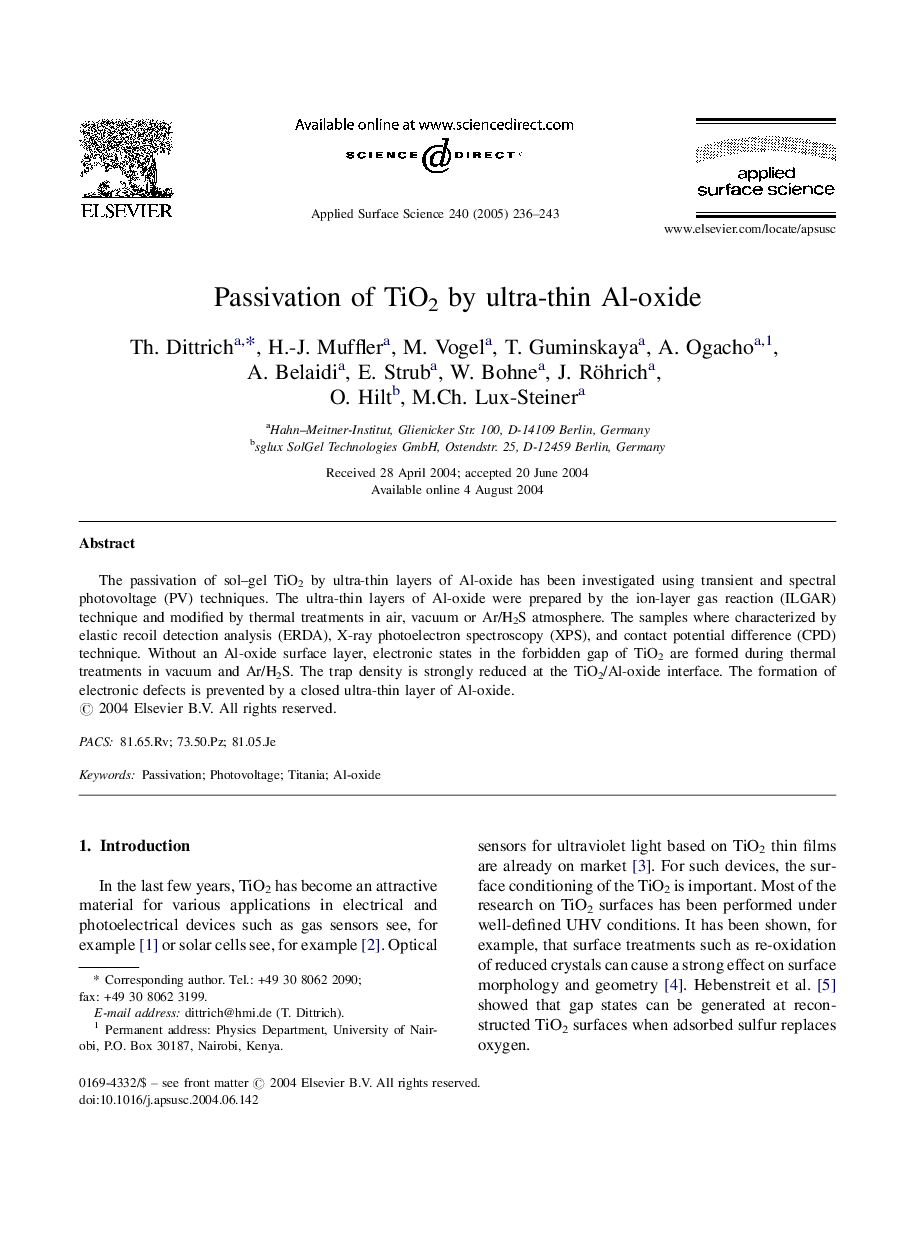| Article ID | Journal | Published Year | Pages | File Type |
|---|---|---|---|---|
| 9567641 | Applied Surface Science | 2005 | 8 Pages |
Abstract
The passivation of sol-gel TiO2 by ultra-thin layers of Al-oxide has been investigated using transient and spectral photovoltage (PV) techniques. The ultra-thin layers of Al-oxide were prepared by the ion-layer gas reaction (ILGAR) technique and modified by thermal treatments in air, vacuum or Ar/H2S atmosphere. The samples where characterized by elastic recoil detection analysis (ERDA), X-ray photoelectron spectroscopy (XPS), and contact potential difference (CPD) technique. Without an Al-oxide surface layer, electronic states in the forbidden gap of TiO2 are formed during thermal treatments in vacuum and Ar/H2S. The trap density is strongly reduced at the TiO2/Al-oxide interface. The formation of electronic defects is prevented by a closed ultra-thin layer of Al-oxide.
Related Topics
Physical Sciences and Engineering
Chemistry
Physical and Theoretical Chemistry
Authors
Th. Dittrich, H.-J. Muffler, M. Vogel, T. Guminskaya, A. Ogacho, A. Belaidi, E. Strub, W. Bohne, J. Röhrich, O. Hilt, M.Ch. Lux-Steiner,
